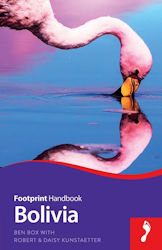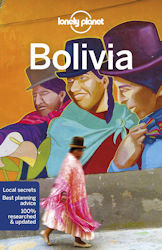Bolivia, officially known as the Plurinational State of Bolivia, is a landlocked country located in South America. It is bordered by Brazil to the north and east, Peru to the northwest, Chile to the southwest, Argentina and Paraguay to the south, and finally, the Republic of the Andes to the west. With an area of 1,098,581 square kilometres, Bolivia is the 28th largest country in the world and the fifth largest country in South America.
Bolivia has a rich and diverse culture that has been shaped by its indigenous heritage and Spanish colonial past. The country is home to more than 30 indigenous ethnic groups, each with its own unique customs, beliefs, and traditions. The Quechua and Aymara are the largest indigenous groups, and their cultures and traditions have had a significant impact on the country’s national identity. Spanish is the country’s official language, but many Bolivians also speak Quechua, Aymara, and other indigenous languages.
Bolivia has a complex economy that is heavily dependent on its natural resources. The country is rich in minerals such as tin, lithium, and natural gas, and these resources play a major role in the country’s economy. Additionally, agriculture and tourism are important industries in Bolivia. The country is known for its diverse landscapes, ranging from the high Andes mountains to the Amazon rainforest, and its unique cultural heritage.
Politically, Bolivia has had a tumultuous history, marked by coups, military rule, and political instability. However, in recent years, the country has experienced a period of political stability and economic growth under the leadership of President Evo Morales. Morales, who is Bolivia’s first indigenous president, was elected in 2006 and has implemented a number of reforms aimed at improving the lives of ordinary Bolivians and reducing poverty.
In conclusion, Bolivia is a fascinating and complex country that has a rich and diverse culture, a complex economy, and a history marked by political turmoil. Despite its challenges, the country has made significant progress in recent years under the leadership of President Evo Morales, and its future looks bright. Bolivia is a unique and important part of South America and a country that is well worth exploring and learning more about.
Best Time to Visit Bolivia
The best time to visit Bolivia largely depends on the region and the specific activities or experiences you are interested in. Here is a general guide to help you determine the best time to visit:
- La Paz and the Altiplano: If you want to visit La Paz and the surrounding Altiplano region, the best time to go is from April to November. During this period, the weather is warm and dry, making it ideal for outdoor activities such as hiking and exploring the nearby lakes and valleys.
- Amazon Basin: If you want to visit the Amazon Basin, the best time to go is from May to September, during the rainy season. This is when the rainforests are lush and teeming with wildlife, making it an ideal time for eco-tourism and jungle adventures.
- Salar de Uyuni: If you want to visit Salar de Uyuni, the best time to go is from November to March, during the dry season. During this period, the salt flats are covered in a thin layer of water, creating a stunning, mirror-like effect that is perfect for photography.
- Lake Titicaca: If you want to visit Lake Titicaca, the best time to go is from May to September, during the dry season. During this period, the lake is calm and clear, making it ideal for boating, fishing, and exploring the nearby islands and villages.
In general, it is best to check the specific weather patterns and conditions in the region you are visiting before planning your trip, as these can vary greatly from year to year.
Average Temperature in Bolivia
The average temperature in Bolivia varies greatly depending on the region and altitude. Bolivia is a large country that spans a range of latitudes and altitudes, from the Amazon Basin in the east to the high Andes Mountains in the west. This range of climates and topography leads to a wide range of average temperatures across the country.
In La Paz, which is located in the high Andes at an altitude of over 3,500 meters (11,500 feet), the average temperature is around 10°C (50°F) throughout the year. In contrast, in the Amazon Basin, temperatures can average around 25°C (77°F) year-round, with high humidity and frequent rainfall.
In the central regions of Bolivia, such as Cochabamba and Sucre, temperatures are more moderate, averaging around 15°C (59°F) to 20°C (68°F) throughout the year. In these regions, the seasons are defined by precipitation patterns, with a rainy season from November to March and a dry season from April to October.
It is important to note that temperatures in Bolivia can also vary greatly from day to night, especially in the high Andes. It is always a good idea to check local weather conditions and pack accordingly when travelling to Bolivia.
Credits
Photo: Illimani 6439m view from La Paz – Bolivia the guardian of La Paz. Photo by: Azzedine Rouichi on Unsplash






